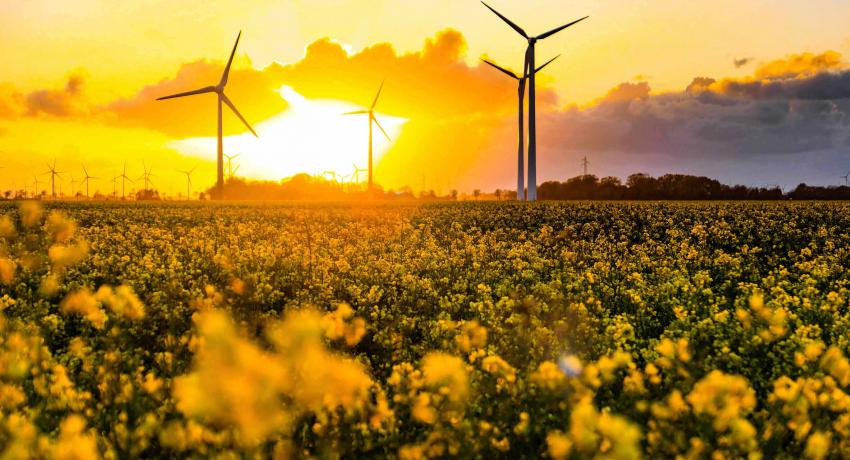By using subseasonal and seasonal forecasts, energy companies can improve their management of weather-related risk and potentially increase their profits. Such forecasts can thus contribute to speeding up the transition to renewable energy.
Under the 2015 Paris Agreement, the world’s governments have committed to strengthening the global response to the threat of climate change by keeping the global temperature rise this century well below 2°C above pre-industrial levels, and to pursue efforts to limit the temperature increase to 1.5°C.
To reach the ambitions of the Paris Agreement, the EU has pledged to cut its greenhouse gas emissions by at least 40% by 2030 compared with 1990 levels, and is currently debating whether to increase this target to ‘put the EU on a balanced pathway to reaching climate neutrality by 2050’.
Increasing the share of renewable energy will be key to cutting Europe’s greenhouse gas emissions. Although the share of clean energy in Europe has been increasing steadily, the pace of growth has slowed down in recent years.
The share of renewables in the EU’s gross final energy consumption stood at 18% in 2018, according to the latest figures from Eurostat. The EU aims to increase this to at least 32% by 2030.
Better forecasts can make renewables investments less risky
Renewable energy production is weather-dependent, and it is challenging to estimate how much clean electricity will be generated. The increasing integration of renewables into the power mix is therefore making the electricity supply more vulnerable to changing weather conditions.
That is why subseasonal and seasonal forecasts are needed, and why the quality of these forecasts must be improved. When subseasonal and seasonal forecasts are skilful and accurate, they can help producers of wind, solar and hydropower get better informed estimates of how much electricity their plants are likely to generate in the weeks and months ahead.
Improved estimates of future power output can enable them to make better decisions on issues such as when to sell their electricity to the market, how much they should sell, what price levels to expect, and when to schedule maintenance of their power plants.
Subseasonal and seasonal forecasts can therefore contribute to reducing the risks involved in investing in renewable energy and help companies invested in the sector to improve their risk management and production planning activities.
Climate services can contribute to ensuring security of supply
The increasing integration of renewable energy into the power mix is also leading to increased weather-related risks for grid operators, which at all times must maintain grid stability and ensure that sufficient levels of generation capacity are available to meet demand.
Electricity demand is also weather-dependent, and tends to increase both when it gets so cold that people turn on their electric heaters to stay warm and when it gets so hot that they switch on their air-conditioners to cool down.
Subseasonal and seasonal forecasts can help grid operators anticipate likely changes in both power demand and the production of electricity from renewable sources over the coming weeks and months. Such forecasts can thus play an important role in maintaining grid stability and preventing blackouts amid the growth of weather-dependent renewable energy.
The S2S4E project calls for more policy support for subseasonal and seasonal forecasts
With a rising share of renewable energy in Europe’s electricity supply, there is a need for new policies that reduce the risks involved in weather-dependent energy production and to mitigate the risks posed to security of supply by the growth of clean energy.
Subseasonal and seasonal forecasts have the potential to help increase security of electricity supply and better manage weather-related risks amid the growth of weather-dependent renewable energy. They can therefore help speed up the transition to renewable energy and contribute to reducing greenhouse gas emissions from the power sector.
Currently, however, there are few policy measures specifically designed to influence the use of subseasonal and seasonal forecasts at EU or national level, and such forecasts remain underused.
In a new policy brief by the S2S4E project, we present our policy proposals for how the EU can increase the use of subseasonal and seasonal forecasts and improve the quality of such forecasts.
Read the full S2S4E policy brief here.
Written by: Iselin Rønningsbakk / CICERO Center for International Climate Research.


